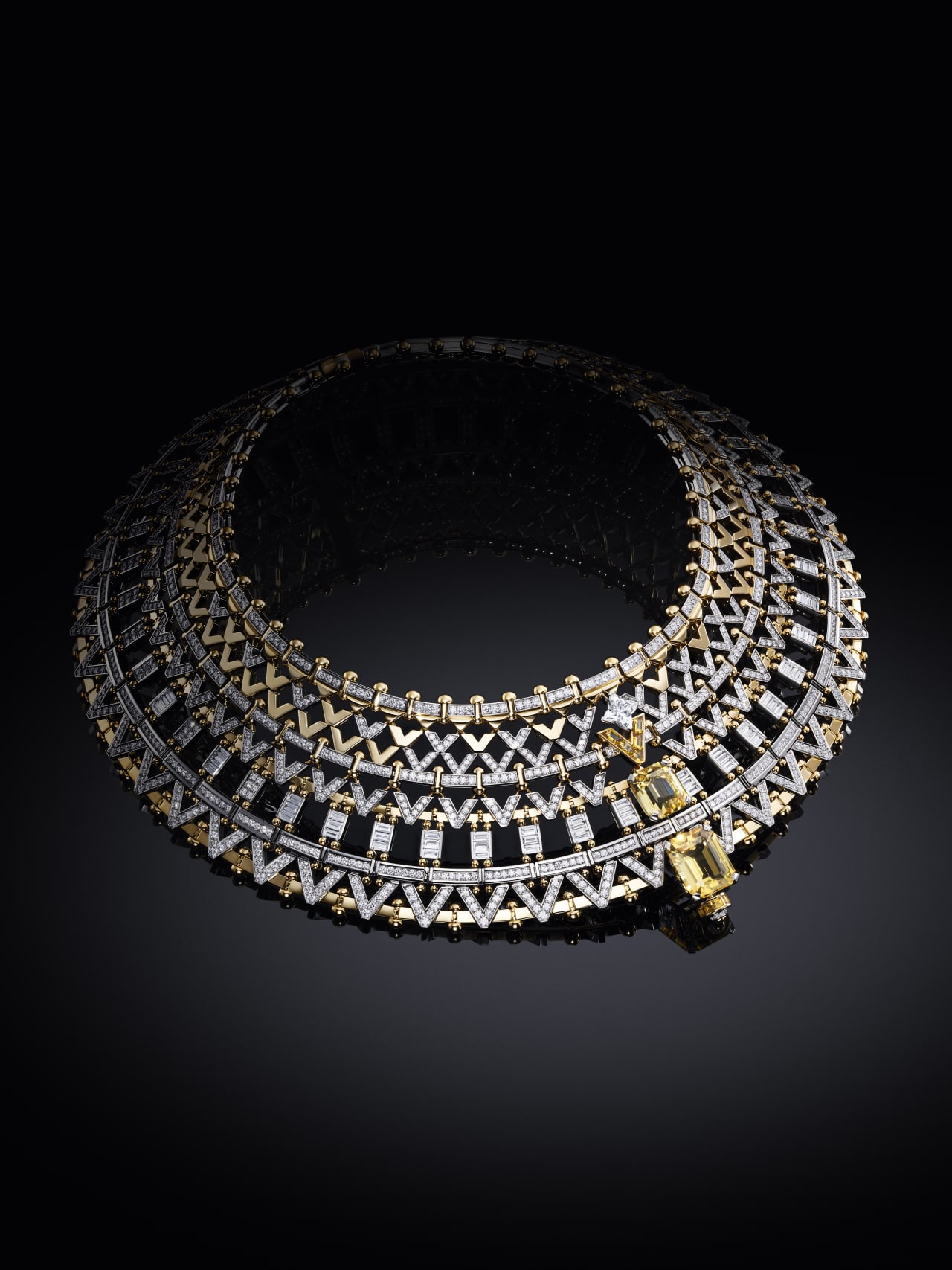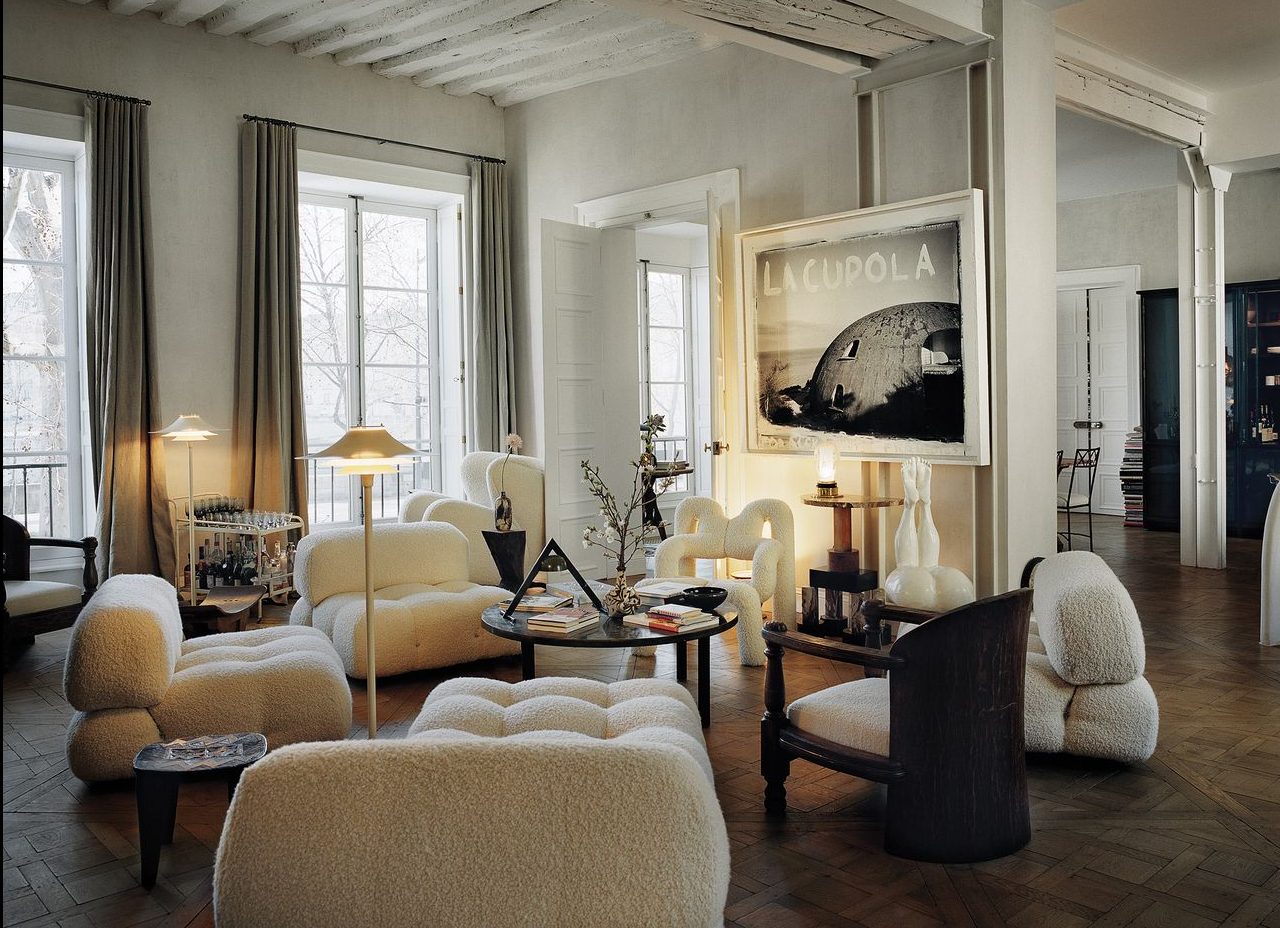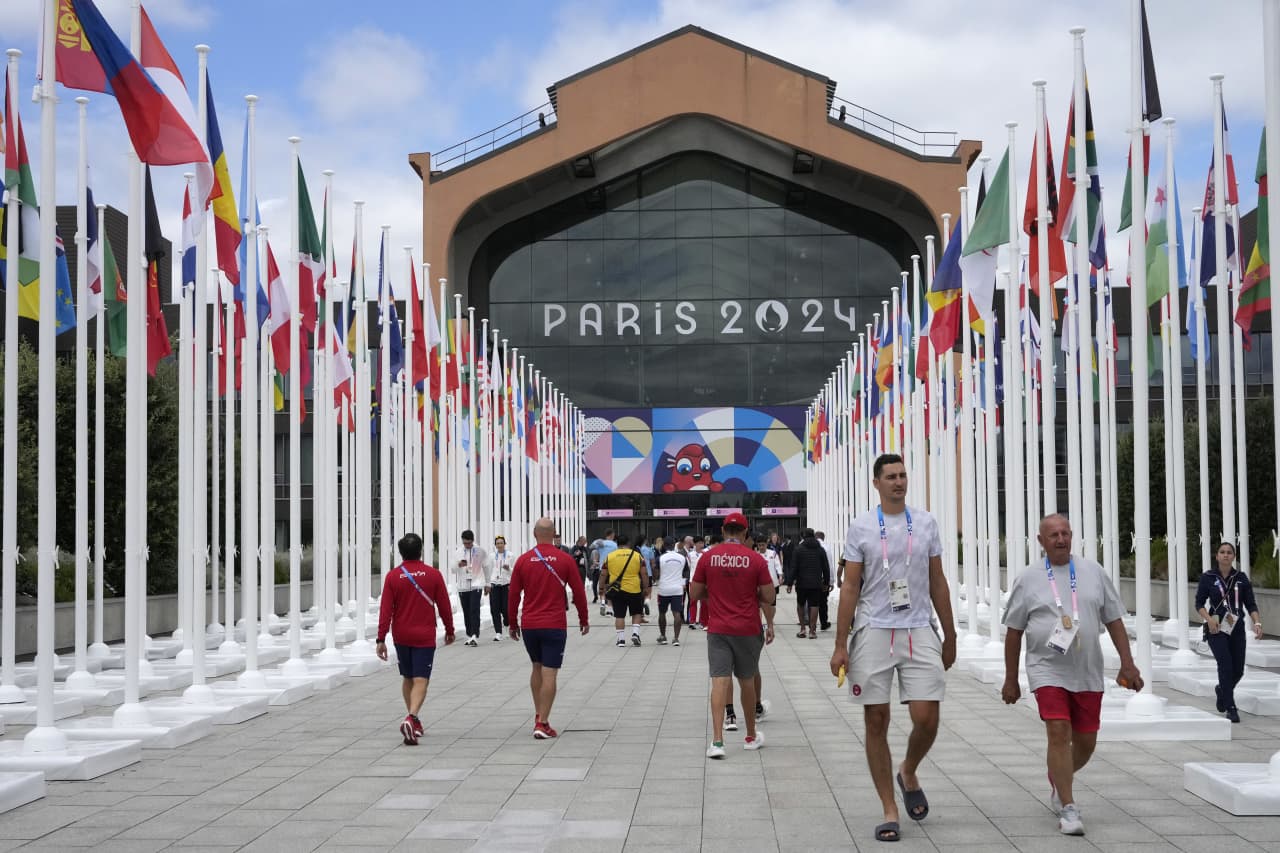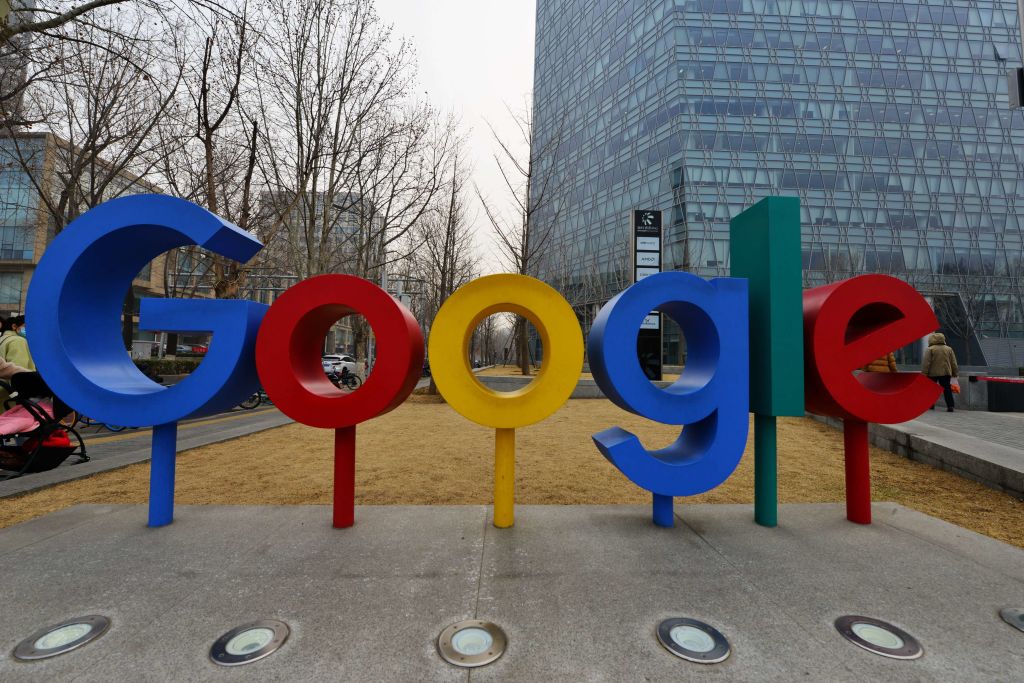As the world turns its eyes to Paris for the start of the Summer Olympics next month, Louis Vuitton pulled out all the stops for its largest, most extravagant, and expensive high-jewellery collection with the title Awakened Hands, Awakened Minds.
Making its debut in St. Tropez on Wednesday night, the collection will encompass 13 themes and 220 pieces, some of which have yet to be unveiled. Of the 100 unique pieces that were exhibited as the first chapter, one overarching theme is clear: French pride and the celebration of the remarkably transformative period in 19th-century France, which witnessed an explosion of French influence and inventiveness.
“France in the 19th century was a phenomenal time of incredible change, and when Paris really became the centre of the world,” says Francesca Amfitheatrof, artistic director for watches and jewellery, in a news release. “The design language of Awakened Hands, Awakened Minds reflects that—all its intricacies, complications, and innovations—turned into incredible jewels.”
The collection explores a journey through that century, beginning with the end of royal court rule, which resulted in a surge of creativity and talent as France’s ateliers and master craftsmen explored and experimented without limits. Among those influenced by this vibrant zeitgeist was a 16-year-old Louis Vuitton, who arrived in Paris in 1837. The apprentice developed his own unique trunkmaking métier, devising a flat and stackable trunk specifically designed for travel.
“Craftsmanship becomes the currency of this country,” Amfitheatrof said. “It is the birth of France’s Art de Vivre —and the birth of what we know as luxury today.”
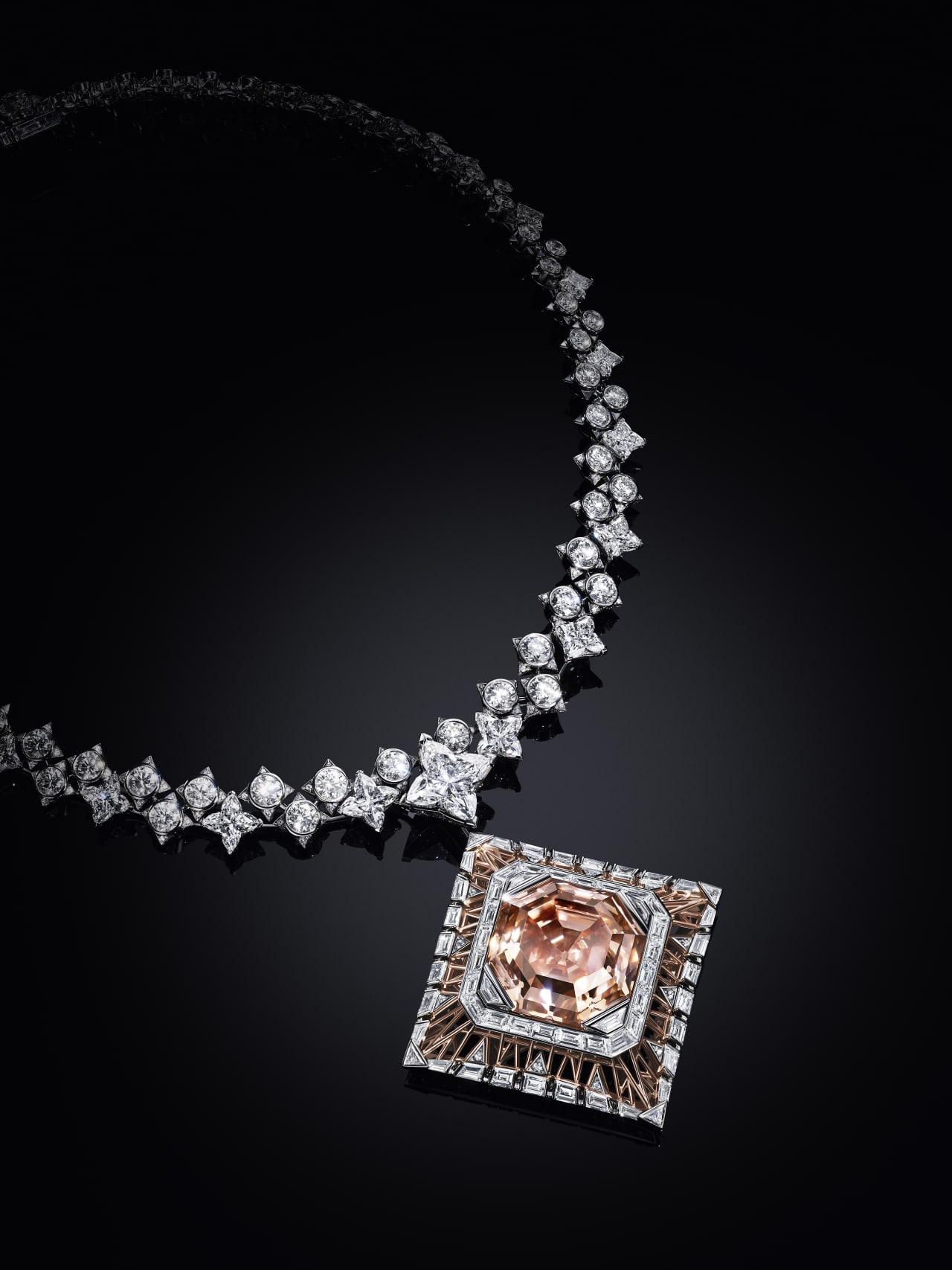
Courtesy of Louis Vuitton
The collection’s Splendeur suite took inspiration from an imperial bed embellished with low-relief woodwork in lace-like floral patterns. But the luxury brand is looking to compete for consumers with more than just aesthetics: The jewels feature more than 110 perfectly matched rubies from Mozambique, all fully traceable through blockchain technology, making Louis Vuitton the first to offer traceability of coloured stones.
Louis Vuitton’s iconic LV Monogram Flower is the chosen theme. The symbol was designed by Louis Vuitton’s son Georges in 1896 in memory of his late father. The flower is portrayed in gold and diamonds with a large center ruby in earrings that complement a high collar, transformable necklace set with 52 rubies framed with an intricate, woven mesh of carved gold flowers. Among the collection’s most complex creations, the Splendeur necklace required the workmanship of 17 setters and 30 jewellers, who spent a total of 3,217 hours on its creation.
Louis Vuitton’s passion for travel is explored in the Vision necklace, which plays on the rivets of Louis Vuitton trunks. Crafted in platinum, yellow gold, diamonds, and yellow sapphires, the disruptive design interlaces V-shaped structures, highlighted with two octagonal-cut yellow sapphires measuring 13.47 carats and 11.79 carats. The piece occupied five jewellers, who mounted and set the necklace section by section over the course of 2,504 hours.
The masterpiece of the entire collection is the Cœur de Paris, the most expensive high-jewellery piece the maison has ever produced.
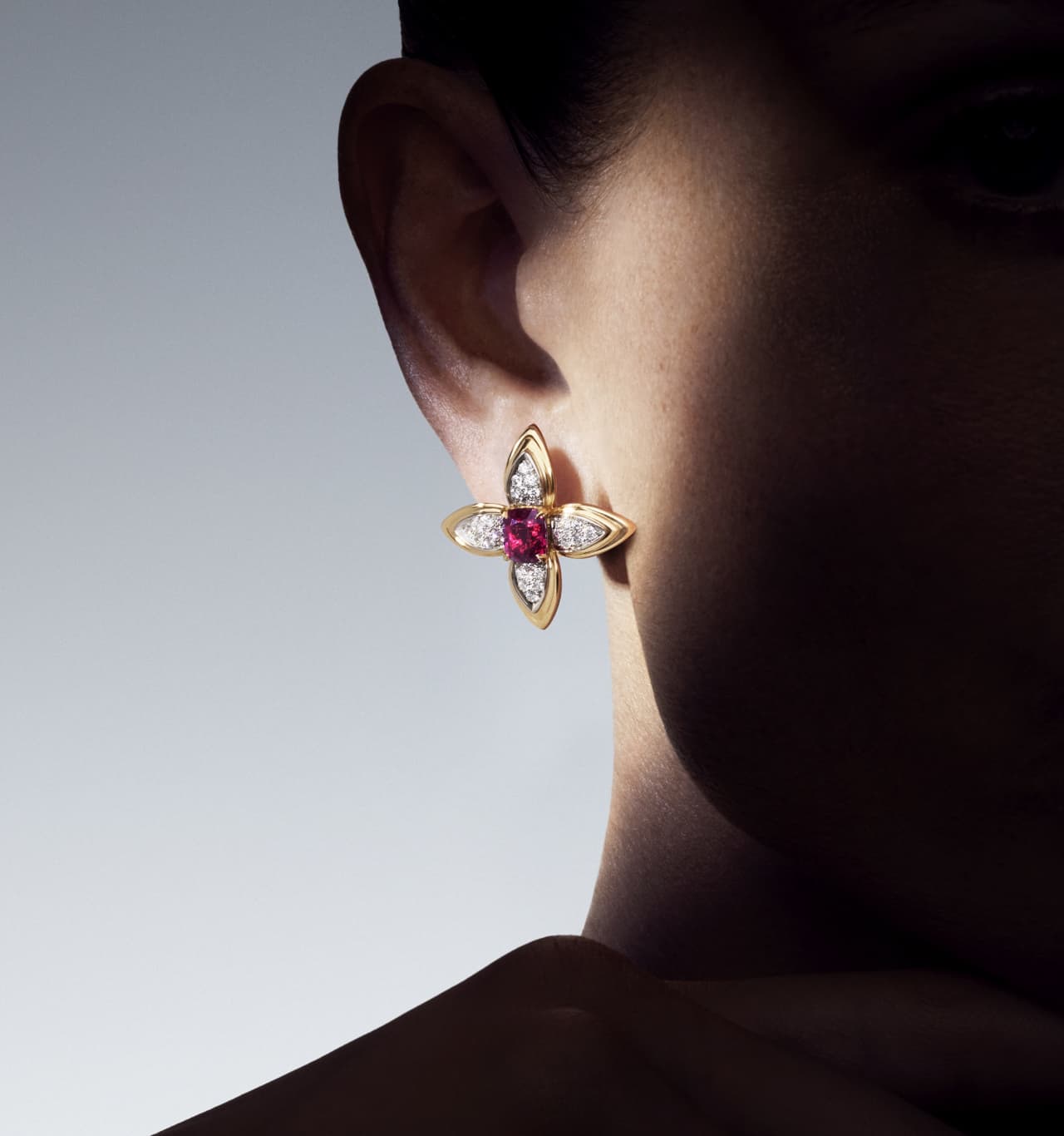
Courtesy of Louis Vuitton
The necklace pays homage to the Eiffel Tower, which was unveiled to the world at the 1899 Exposition Universelle as a beacon of modernity and ingenuity. The Cœur de Paris offers a new perspective on the structure, as if you are viewing it from underneath looking up. Pink gold rods embrace a grid of baguette settings and diamond-lit arrows, which frame the jewel’s centrepiece: a captivating 56.23-carat diamond christened the Cœur de Paris. The collection’s rarest and most important master stone radiates a unique colour with an intense pink hue complemented with unusual tones of orange and brown. It is set in a medallion that can be detached to wear as a brooch.
The centrepiece dangles from a 5.73-carat LV Monogram Star-cut diamond interlinked with 26 LV Monogram Star-cut diamonds in an opulent rivière creation that is a first for the house. A companion ring features a complementary 12.67-carat, museum-quality diamond that emanates a fancy deep, brownish pink and orange hue.
“Awakened Hands, Awakened Minds tells a story that’s very close to who we are,” Amfitheatrof said. “By showing this mixture of craftsmanship, engineering, invention, and bravery, we are really talking about Louis Vuitton. … we couldn’t celebrate in a better way.”
 Copyright 2020, Dow Jones & Company, Inc. All Rights Reserved Worldwide. LEARN MORE
Copyright 2020, Dow Jones & Company, Inc. All Rights Reserved Worldwide. LEARN MORE
What a quarter-million dollars gets you in the western capital.
Alexandre de Betak and his wife are focusing on their most personal project yet.
CIOs can take steps now to reduce risks associated with today’s IT landscape
As tech leaders race to bring Windows systems back online after Friday’s software update by cybersecurity company CrowdStrike crashed around 8.5 million machines worldwide, experts share with CIO Journal their takeaways for preparing for the next major information technology outage.
Be familiar with how vendors develop, test and release their software
IT leaders should hold vendors deeply integrated within IT systems, such as CrowdStrike , to a “very high standard” of development, release quality and assurance, said Neil MacDonald , a Gartner vice president.
“Any security vendor has a responsibility to do extensive regression testing on all versions of Windows before an update is rolled out,” he said.
That involves asking existing vendors to explain how they write software, what testing they do and whether customers may choose how quickly to roll out an update.
“Incidents like this remind all of us in the CIO community of the importance of ensuring availability, reliability and security by prioritizing guardrails such as deployment and testing procedures and practices,” said Amy Farrow, chief information officer of IT automation and security company Infoblox.
Re-evaluate how your firm accepts software updates from ‘trusted’ vendors
While automatically accepting software updates has become the norm—and a recommended security practice—the CrowdStrike outage is a reminder to take a pause, some CIOs said.
“We still should be doing the full testing of packages and upgrades and new features,” said Paul Davis, a field chief information security officer at software development platform maker JFrog . undefined undefined Though it’s not feasible to test every update, especially for as many as hundreds of software vendors, Davis said he makes it a priority to test software patches according to their potential severity and size.
Automation, and maybe even artificial intelligence-based IT tools, can help.
“Humans are not very good at catching errors in thousands of lines of code,” said Jack Hidary, chief executive of AI and quantum company SandboxAQ. “We need AI trained to look for the interdependence of new software updates with the existing stack of software.”
Develop a disaster recovery plan
An incident rendering Windows computers unusable is similar to a natural disaster with systems knocked offline, said Gartner’s MacDonald. That’s why businesses should consider natural disaster recovery plans for maintaining the resiliency of their operations.
One way to do that is to set up a “clean room,” or an environment isolated from other systems, to use to bring critical systems back online, according to Chirag Mehta, a cybersecurity analyst at Constellation Research.
Businesses should also hold tabletop exercises to simulate risk scenarios, including IT outages and potential cyber threats, Mehta said.
Companies that back up data regularly were likely less impacted by the CrowdStrike outage, according to Victor Zyamzin, chief business officer of security company Qrator Labs. “Another suggestion for companies, and we’ve been saying that again and again for decades, is that you should have some backup procedure applied, running and regularly tested,” he said.
Review vendor and insurance contracts
For any vendor with a significant impact on company operations , MacDonald said companies can review their contracts and look for clauses indicating the vendors must provide reliable and stable software.
“That’s where you may have an advantage to say, if an update causes an outage, is there a clause in the contract that would cover that?” he said.
If it doesn’t, tech leaders can aim to negotiate a discount serving as a form of compensation at renewal time, MacDonald added.
The outage also highlights the importance of insurance in providing companies with bottom-line protection against cyber risks, said Peter Halprin, a partner with law firm Haynes Boone focused on cyber insurance.
This coverage can include protection against business income losses, such as those associated with an outage, whether caused by the insured company or a service provider, Halprin said.
Weigh the advantages and disadvantages of the various platforms
The CrowdStrike update affected only devices running Microsoft Windows-based systems , prompting fresh questions over whether enterprises should rely on Windows computers.
CrowdStrike runs on Windows devices through access to the kernel, the part of an operating system containing a computer’s core functions. That’s not the same for Apple ’s Mac operating system and Linux, which don’t allow the same level of access, said Mehta.
Some businesses have converted to Chromebooks , simple laptops developed by Alphabet -owned Google that run on the Chrome operating system . “Not all of them require deeper access to things,” Mehta said. “What are you doing on your laptop that actually requires Windows?”





